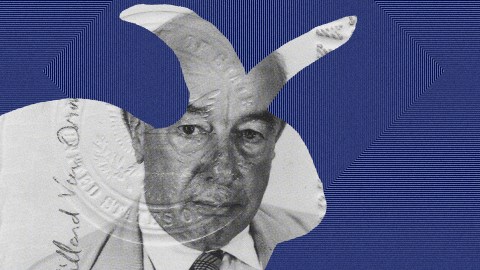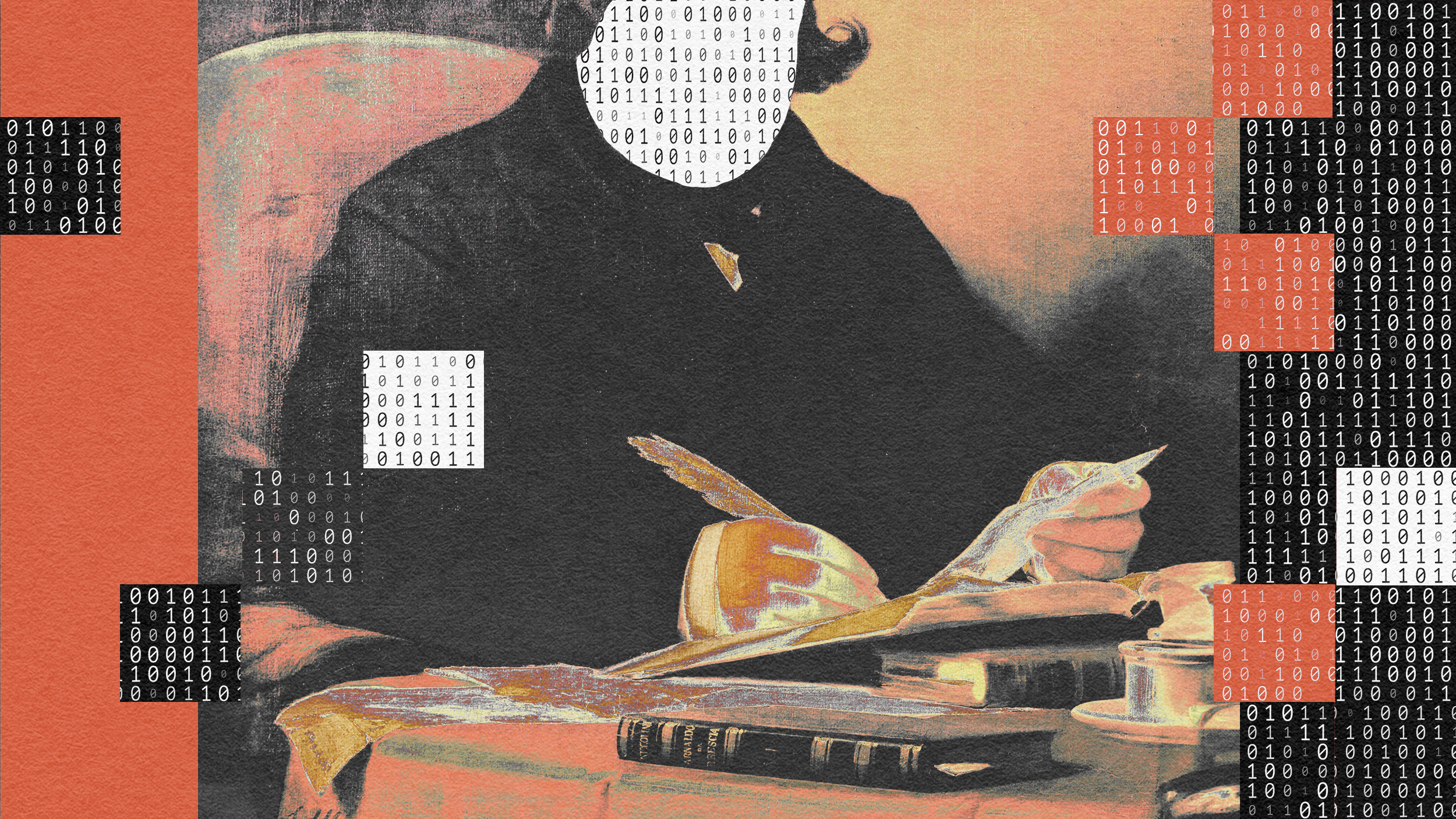How Quine’s rabbit can teach you to be a better communicator

- In the 1960s, the philosopher Willard Quine gave us a thought experiment about two anthropologists, a rabbit, and the complexities of language.
- Quine's point was to demonstrate that concepts often depend on each other to make sense in word form.
- Using Quine's example, we can learn how to be better communicators in the workplace and how to avoid making important, and expensive, mistakes.
Imagine two anthropologists, Willard and Orman, who stumble over some never-before-seen tribe. There is the usual first-contact kind of behavior: pointing, laughing, and frustrated misunderstandings. It becomes apparent that the anthropologists need to decipher this tribe’s language. But, without Google Translate or pocket dictionaries, it turns out that working out a language from scratch is hard work. One day, a hunting party and the anthropologists are out in a woodland clearing when a rabbit bolts past. A tribesman points excitedly and shouts, “Gavagai!”
“Aha!” Orman shouts, “We now know that gavagai is their word for rabbit.” And he goes to take out his nascent dictionary. His friend raises a hand to stop him.
“Not so fast, Orman,” Willard says. “Gavagai might mean rabbit, but how do we know it doesn’t mean “rabbit leg” or “rabbit at speed?” In fact, it could mean any number of weird things: a demon in rabbit form, a rabbit god, a rabbit temporarily locked in an inter-dimensional chase with a fox.”
“Darn,” Orman says, “you’re right.”
This thought experiment goes back to the 1960s, with the American analytic philosopher, Willard Van Orman Quine and it’s all to do with the confusing knot that is language. But it’s not just a problem for first-contact anthropologists; it’s a problem for us all.
Fearful or trepidatious?
Quine’s “gavagai” example is designed to show us that the way we use language is not a straightforward thing. We all use words in a specific and context-dependent way because, presumably, our unique life history has given rise to them. Our culture produces a certain word, our parents adopt and adapt it, and our surroundings provide examples of it.
If I ask you to imagine a “dog,” what comes to mind? Ask someone around you — what does their “dog” look like? The word and concept you have of “dog” probably owes itself to some childhood pet or formative childhood experience of dogs. Maybe you watched a kid’s TV show about dogs, maybe you had a favorite book about dogs, or maybe your next-door neighbor had a dog that terrified you. Somewhere along the line, you learned to imagine a certain kind of “dog.”
We can never assume, then, that a word has the completely same meaning for everyone. We assume that many of our words, such as gavagai and rabbit, have obvious meanings. But, as wily Willard knows, you can make very few assumptions when it comes to “what they mean.” For Quine, all of the words in our language are so irrevocably interlinked that any attempt to understand any one concept in isolation is nearly impossible. We need concepts to understand concepts. We can’t assume to entirely understand a language from within our own language. Another example is to imagine a non-native speaker learning English for the first time. They’re trying to broaden their vocabulary and are bored of the word “scared.” So, one day, our non-native speaker is chatting with an English-speaking friend and says, “I don’t like spiders; they make me trepidatious.” You can see what they’ve done. It’s a kind of synonym, but also not quite right.
Language is subtle. Concepts are knotty.
Look again and look closer
Analytic philosophy is famous for being unassailably confusing. It hides behind logical symbols and wallows in esoteric language. So how can we bring Quine’s idea into the everyday? What can we learn from Willard and Orman?
Experiment a lot. When humans are presented with a breakthrough technology or game-changing discovery, our reaction can often be similar to that of the anthropologist. We’re left scratching our heads about what to make of it. Earlier this year, Big Think spoke to the COO of GitHub, Kyle Daigle, and he argued this is exactly where we’re at with AI. “Right now, we’re just trying to jam AI everywhere,” Daigle said. “We’re at that moment in the industrial revolution of software where we’re trying to figure out where we apply it.” The lesson of Daigle and Quine is to keep on experimenting. When you place yourself in the start-up and innovation business, you will often have to try things out a little to see what works. There are thousands of AI companies trying to “best-fit” LLMs. Try, fail, try, fail, try … and win.
Give unambiguous instructions. In a diverse workplace where employees come from different backgrounds and perspectives, it’s dangerous to assume everyone has a shared understanding of what you consider a “basic” concept. To mitigate against this, managers and teams should provide explicit explanations and feature “back to basics” presentations, even when they seem unnecessary. One relatable and common area of ambiguous communication and talking past one another is in inter-generational conversations. People of notably different ages often understand words differently and given most modern companies are made up of a range of ages, getting this right is important. Over on Big Think+, co-author of When Millennials Take Over, Jamie Notter, gives us some expert tips on how to make things better.
Look closer. There is a famous story that, in 1962, the Decca Records executive Dick Rowe — discoverer of The Rolling Stones; aka “The Man with the Golden Ear” — said of The Beatles: “Not to mince words, Mr. Epstein, we don’t like your boys’ sound. Guitar groups are on the way out.” Rowe was spectacularly wrong about the Fab Four as a pop product — and his legendary mis-step is by no means unusual at the corporate level. Kodak refused to accept the reality of digital photography, and Nokia failed to plan for the smartphone revolution. Conversely, many products are ill-conceived or ill-timed in the first place. The Segway didn’t transform transport, and Google Glass was an expensive, embarrassing flop. Of course, it’s platitudinal bunk to say, “Make sure you read the markets correctly.” It’s not easy to do; otherwise, you’d be a millionaire. But one of the most important lessons in Quine’s “gavagai” is to look again and look closer. Orman assumed “gavagai” meant rabbit, but Willard offered ways he could be wrong. In other words, check your work and get your work checked.




